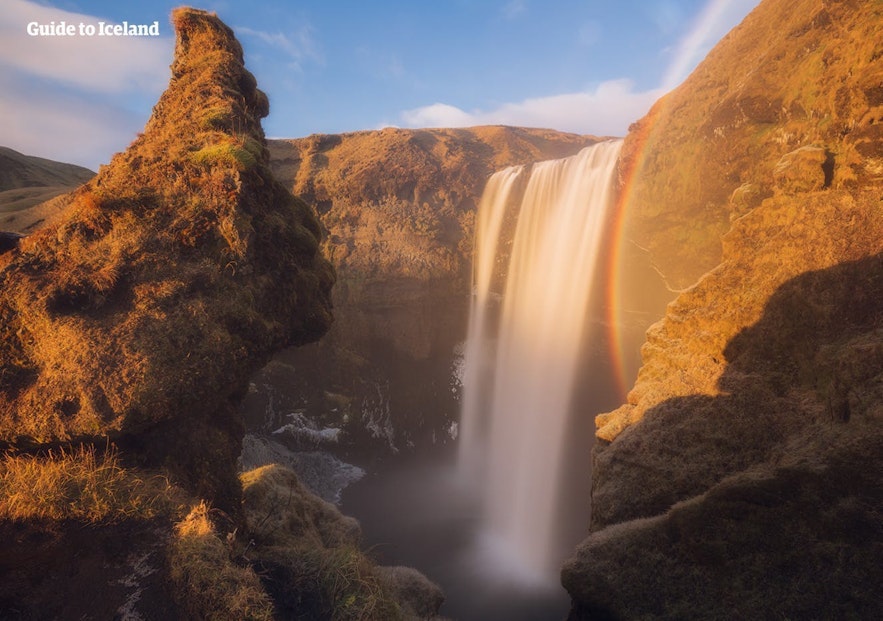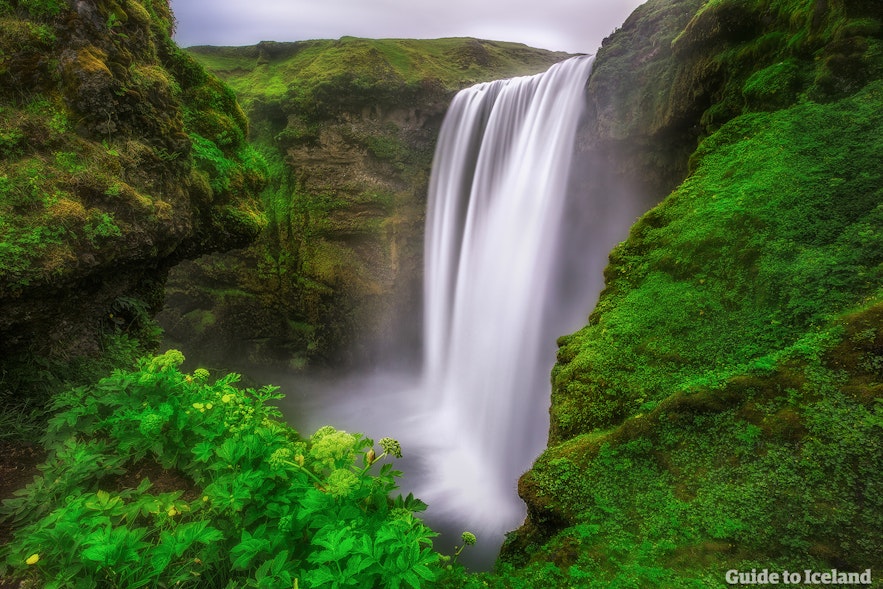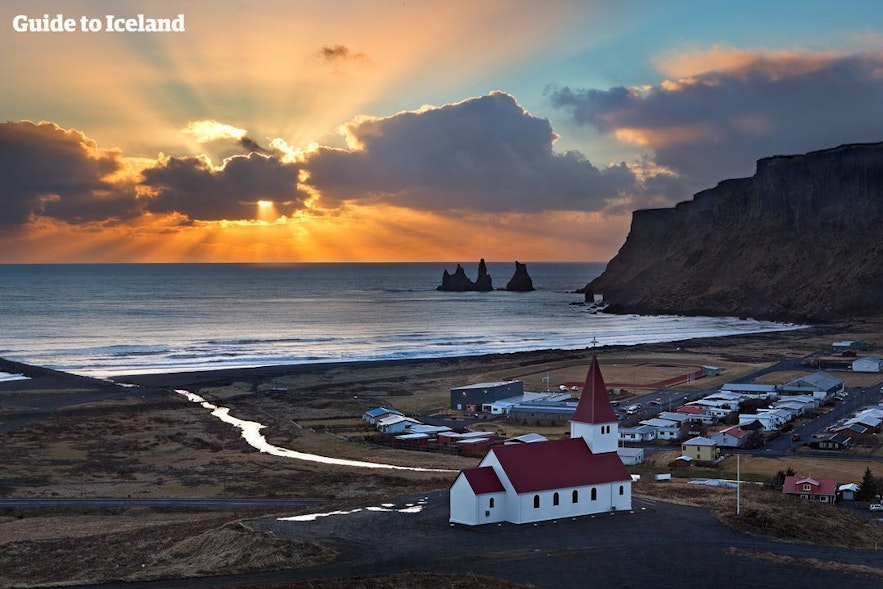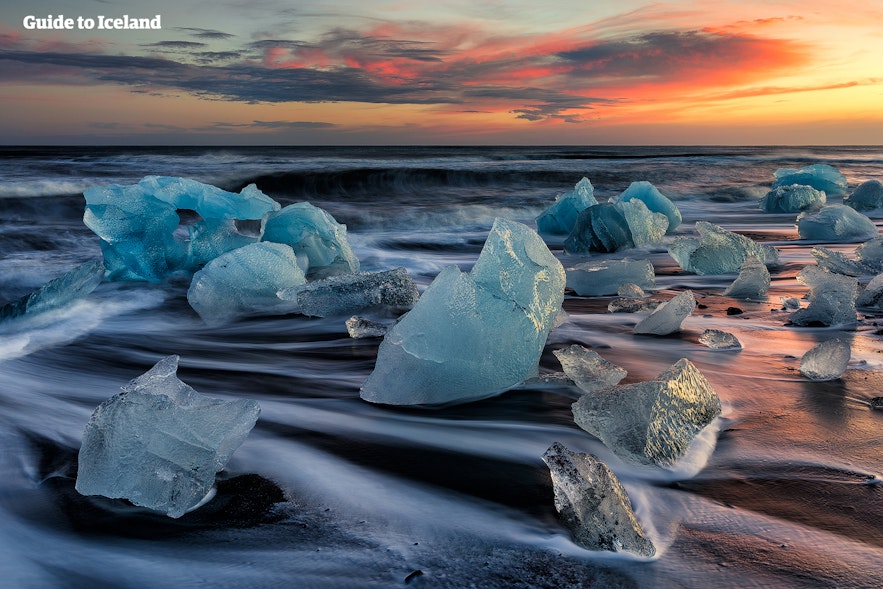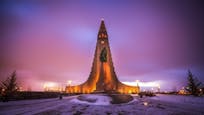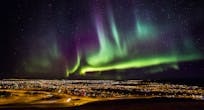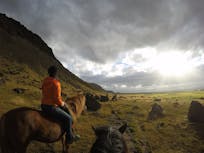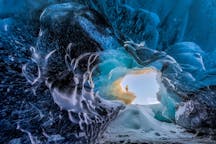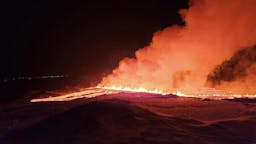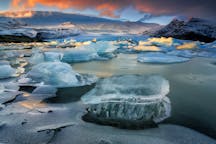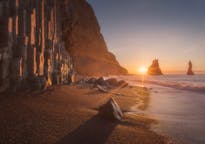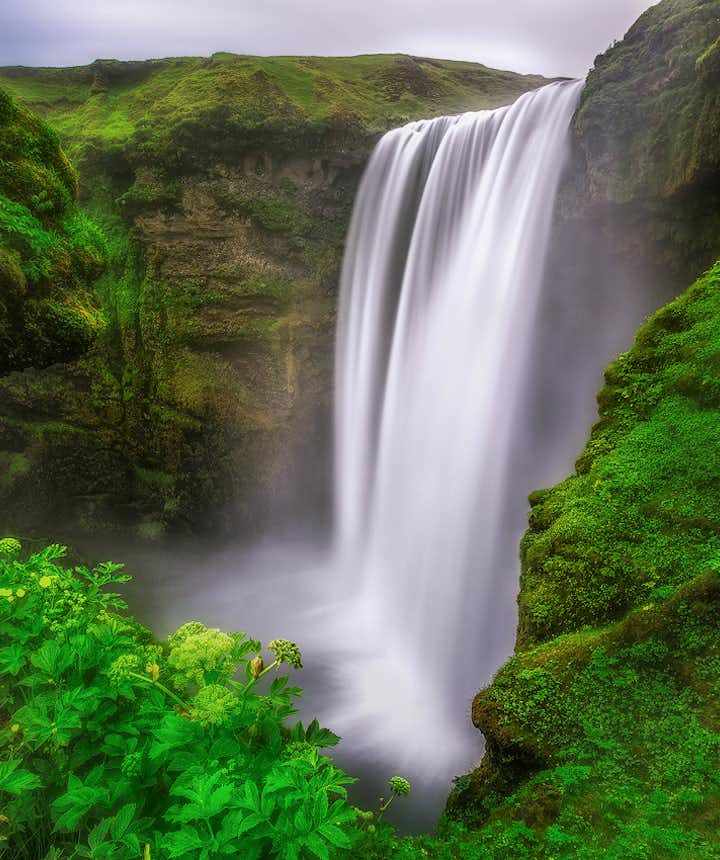
Highlights from Iceland's South Coast
Extending from the south of Reykjavik to the famous Jökulsárlón glacier on the Vatnajökull National Park, Iceland's South Coast gathers many wonders for nature lovers.
Waterfalls, glaciers, kilometers upon kilometers of an otherworldly landscape and breath-taking black sand beaches can all be found in this region. Here are my favourite jaw-dropping attractions on the south coast:
Seljalandsfoss Waterfall
Seljalandsfoss is one of Iceland’s most famous waterfalls, and thanks to its curvature and distance from the cliffs travellers that visit the south coast during summer can even walk behind it. The impressive 63 meters drop can be seen from the ring road and creates enough drizzle to leave you soaking wet, so make sure to wear waterproof clothing.
The path is closed during winter as it gets too slippery, but visiting Seljalandsfoss is a must even if it’s snowing. The contrast between the frozen river and the dancing waterfall is mesmerizing and you will definitely spend a long time taking photos there. Nearby Seljalandsfoss there is also the secret Gljúfrabúi waterfall, hidden inside a slit on the cliff away from tourists.
Skógafoss Waterfall
30 kilometers away from Seljalandsfoss is Skógafoss, a 60m high and 25m wide waterfall where you can definitely feel the force of nature. According to the legend, behind Skógafoss there is a huge chest full of treasures that was hidden by the first Viking who lived in the region.
It’s possible to get close to the waterfall even in winter and there’s also a path leading up to the top, but if climbing 500+ steps seems too daunting don’t worry - the most impressive view is still from the bottom of the waterfall.
Sólheimajökull Glacier
Picture from Solheimajokull Ice Climbing & Glacier Hike
A part of Mýrdalsjökull, one of the biggest glaciers in Iceland, the history of Iceland is engraved on the stunning Sólheimajökull glacier. Frozen streams that can be seen through the clear ice, rocks and marks from past eruptions that over thousands of years have slowly changed the country’s landscape… More recently the glacier has been telling a sad story though, as the ice melts rapidly due to climate change – it’s calculated that if nothing changes, the glacier will be completely gone within a century.
You can also go for a glacier hike on Sólheimajökull, however do not step on the ice unless an experienced guide accompanies you. Visiting a glacier by yourself is extremely dangerous, as you won’t know which parts of the ice are safe to step on and any changes in temperature might make some spots inaccessible.
Vík í Mýrdal
Approximately 180km from Reykjavik, Vík is the southernmost village in Iceland and while less than 300 people live there it’s still the biggest in the region. The main attraction inside the village is the Icelandic-style Reyniskirkja white church, which looks extremely photogenic against the wild background. But the real highlights from Vík í Mýrdal are all around the village: waterfalls, beaches, fields and mountains!
Vík’s Black Sand Beach is one of the most beautiful places I’ve ever seen in my travels, even though it’s completely different from the quintessential beach landscape. All the elements are there: sand, some cliffs, the sea and the waves, but it looks like you are on another planet or seeing the world through a black and white filter.
Reynisfjara Black Sand Beach
Named by National Geographic as one of the 21 best beaches in the world, the black tiny pebble Reynisfjara beach is famous for its wild Atlantic waves, basalt pillars and dark caves. And as if the stunning scenery and the Reynisdrangar rock formations are not enough, during summer it’s also possible to spot puffins around there!
Tourists must be careful when visiting Reynisfjara because of its violent waves, as the so-called “sneaker waves” can show up even when the beach seems quiet. This famous attraction now displays several warning signs and visitors are advised never to turn their back to the sea, always maintain a safe distance from the water and most of all, listen to commands from the guides in the area.
Seljalandsfoss, Skógafoss, the Sólheimajökull glacier and the black sand beaches can be seen on a day tour from Reykjavik even during winter, when there are not many daylight hours. However, to include more attractions on the darker months it’s recommended to opt for a two-day tour or staying for a couple of nights in the area (the cottages by the Reynisfjara beach would be a great option).
Jökulsárlón Glacier Lagoon
One of Iceland’s most famous tourist attractions! In this massive glacier lagoon you can see big blocks of ice floating around as they make their way out to the open sea.
During summer there are boat tours that bring you even closer to the icebergs (however don’t attempt to walk on the ice as it’s extremely dangerous!), and during winter you can book a glacier hike and explore the ice caves in Vatnajökull.
Make sure to also visit the Diamond Beach, a stretch of black sand dotted with glistening ice crystals in various shapes and sizes.
- Find Jökulsárlón Tours here.
Altri blog interessanti

My favourite place in Iceland
Ciao a tutti voi! Sono nuovo qui ma il mio blog è molto interessato! Vengo dall'Italia e così tutto dell'Islanda! Chiedimelo e ti darò una risposta! Oggi vi parlerò del mio posto preferito in quesLeggi di più6 Towns You Need To Visit In Iceland
There are a number of small towns in Iceland you need to visit. When I first started planning our trip to Iceland it was really hard to actually narrow it down. While the country itself has seen anLeggi di piùThe Best Bits Of Reykjavik
Iceland. An incredible place and a beautiful country, the focal point of which is the bustling city of Reykjavik. During my stay in Iceland i spent 4 days in the dainty city and I’m going to share witLeggi di più

Scarica sul tuo telefono il mercato di viaggi più grande d'Islanda per gestire l'intero viaggio in un unico posto
Scansiona questo codice QR con la fotocamera del telefono e premi il link che appare per aggiungere il mercato di viaggi più grande d'Islanda in tasca. Aggiungi il tuo numero di telefono o l'indirizzo e-mail per ricevere un SMS o un'e-mail con il link per il download.


